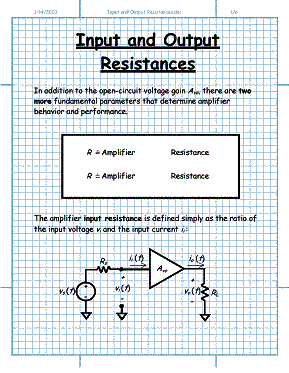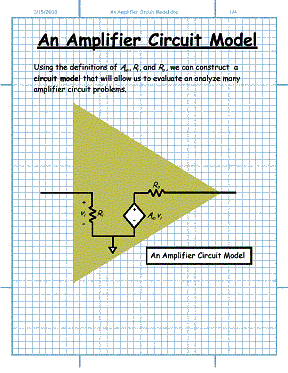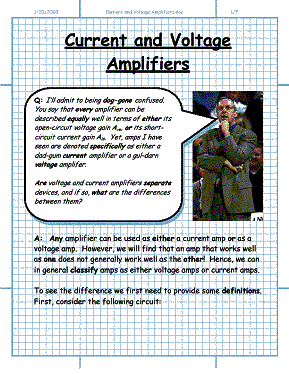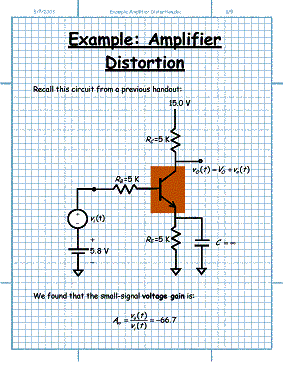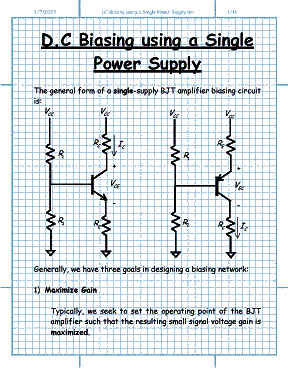![]()
EECS 412 Class
Handouts
![]()
Section 1.4: Amplifiers
Section 1.5: Circuit
Models for Amplifiers
Section
1.6: Frequency
Response of Amplifiers
Section
2.1: The Op-Amp Terminals
Section 2.2: The Ideal Op-Amp
The Ideal Operational
Amplifier
Section 2.3: The Inverting Configuration
Analysis of the
Inverting Amplifier
Ri and Ro
of the Inverting Amplifier
Section 2.4: Other Applications of the Inverting
Configuration
An
Application of the Inverting Integrator
Section 2.5: The
Non-Inverting Configuration
The NonInverting
Configuration
Section 2.6: Examples of Op-Amp Circuits
Example: A
Non-Inverting Network
Example: Another
Inverting Network
Superposition and
OpAmp Circuits
Differential and
Common Mode Gain
Section 2.7: Effect of Finite Open-Loop Gain and
Bandwidth on Circuit Performance
Example: The
Gain-Bandwidth Product
Section 2.8: Large-Signal Operation of Op-Amps
Section 2.9: D.C. Imperfections
Example: The Input
Offset Voltage
Reducing
the Effect of Input Bias Current
Section 4.6: Analysis of Transistor Circuits at DC
BJT Gain and the
Active Region
Steps for
DC Analysis of BJT Circuits
Hints for DC Analysis of BJT Circuits
Example:
DC Analysis of a BJT Circuit
Example:
Another BJT Circuit Analysis
Section 4.7: The Transistor as an Amplifier
A Small
Signal Analysis of Human Growth
A Small Signal
Analysis of a BJT
Example:
A Small Signal BJT Approximation
Example:
Calculating the Small Signal Gain
The Small Signal
Equation Matrix
Section 4.8: Small-Signal Equivalent Circuit Models
Small Signal Output
Resistance
Steps for Small
Signal Analysis
Example:
A Small Signal Analysis of a BJT Amp
Example:
Small-Signal Input and Output Resistances
Section 4.9: Graphical Analysis
Section 4.10: Biasing the BJT for Discrete-Circuit
Design

